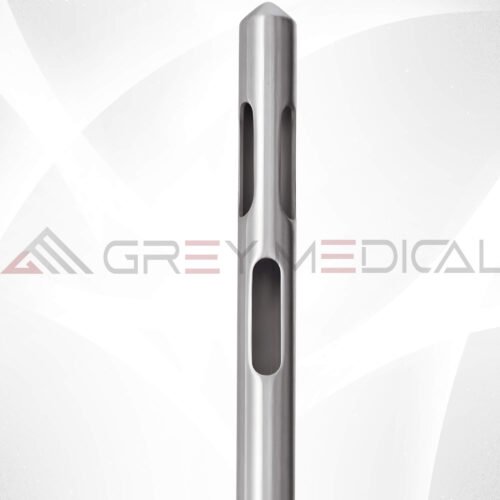views
Sculpting Confidence: Understanding the Liposuction Cannula Surgical Instrument
Liposuction is a widely sought-after cosmetic procedure designed to remove stubborn pockets of fat and sculpt the body's contours. At the heart of this transformative process lies a crucial surgical instrument: the liposuction cannula. Often referred to broadly as a "liposuction needle," it's more accurately described as a cannula due to its blunt tip and multiple perforations. These precisely engineered tools are vital for safely and effectively extracting unwanted adipose tissue, playing a pivotal role in achieving smooth, refined results.

The Anatomy and Function of a Liposuction Cannula
A liposuction cannula is typically a thin, hollow tube, usually made from high-grade stainless steel. While often called a "needle," its tip is blunt, not sharp like a hypodermic needle. This blunt design is a critical safety feature, allowing the cannula to navigate through fatty tissue by pushing aside nerves and blood vessels rather than cutting them, significantly reducing the risk of trauma, bruising, and complications. Along the shaft of the cannula, there are one or more small holes, or "ports," through which the fat is suctioned. The cannula is connected to a vacuum pump or syringe, which generates the negative pressure needed to draw out the fat cells. As the surgeon carefully moves the cannula back and forth through the fatty layer, the fat cells are dislodged and aspirated, leading to a more contoured appearance.
Diverse Designs for Targeted Results
Liposuction cannulas come in a vast array of sizes, lengths, and tip configurations, each designed to optimize fat removal from specific body areas and for different surgical techniques. Microcannulas, for instance, are very fine and are often used for delicate areas like the face, neck, or for highly precise contouring. Larger cannulas, sometimes referred to as macrocannulas, are employed for removing greater volumes of fat from broader areas like the abdomen or thighs. The tip designs also vary, with options like single-port, multi-hole (e.g., Mercedes, tri-port, spiral), and specialized tips for specific applications such as infiltration or fat harvesting for transfer. This diverse range allows surgeons to tailor their approach to the individual patient's anatomy and desired outcome.
Cannulas in Action: Different Liposuction Techniques
The choice of cannula is intrinsically linked to the liposuction technique being performed. In traditional suction-assisted liposuction (SAL), the cannula is manually moved to break up and suction fat. Power-assisted liposuction (PAL) utilizes a vibrating cannula, which mechanically oscillates to more efficiently break down fat cells, often reducing surgeon fatigue and potentially leading to smoother results. Ultrasound-assisted liposuction (UAL) and laser-assisted liposuction (LAL) involve the use of specialized cannulas that emit ultrasound waves or laser energy, respectively, to liquefy fat before it is suctioned out with a standard cannula. Each technique leverages the cannula in a slightly different manner to achieve optimal fat removal and body sculpting.
The Importance of Precision and Care
Given their critical role in liposuction, the quality, material, and maintenance of liposuction cannulas are paramount. High-quality cannulas, often made from surgical-grade stainless steel, ensure durability, proper sterilization, and consistent performance. After each use, these instruments undergo rigorous cleaning, disinfection, and sterilization procedures to prevent infection and maintain their integrity. The blunt tip design, coupled with the surgeon's expertise and careful technique, minimizes tissue trauma, leading to less pain, bruising, and a quicker recovery for the patient.
Conclusion
The liposuction cannula, though often simply referred to as a "needle," is a sophisticated surgical instrument that is fundamental to the success of liposuction procedures. Its diverse designs, ranging from fine microcannulas to larger multi-hole variations, allow for precise and effective fat removal across various body areas and surgical techniques. The continuous evolution of cannula design and the meticulous care given to these instruments underscore their crucial role in helping individuals achieve their aesthetic goals with enhanced safety and optimal results.










